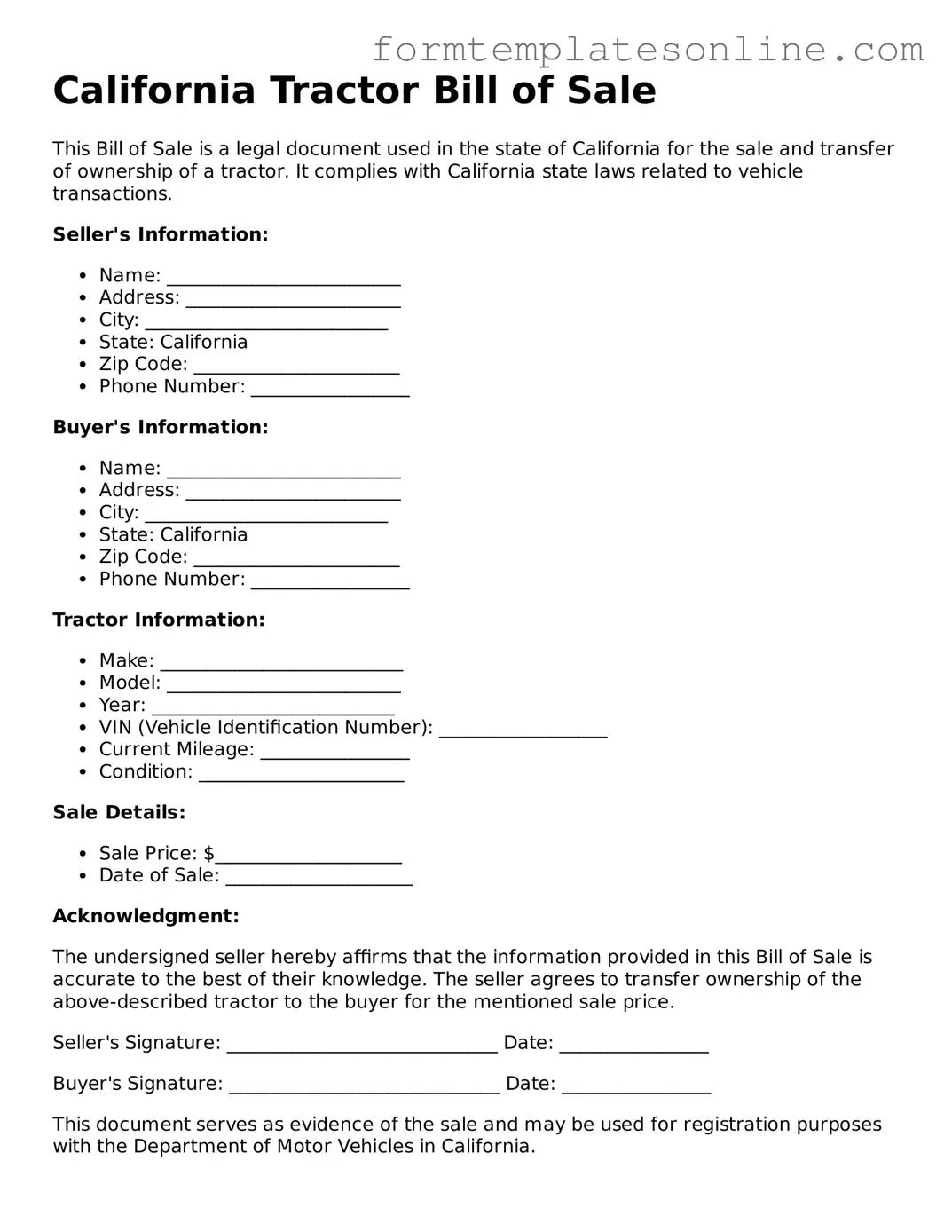What is a California Tractor Bill of Sale form?
The California Tractor Bill of Sale form is a legal document used to record the sale of a tractor between a buyer and a seller. This form serves as proof of the transaction and includes essential details such as the make, model, year, and identification number of the tractor. It also outlines the sale price and the names and addresses of both parties involved. Having this document helps protect both the buyer and seller by providing clear evidence of the transaction.
Why is it important to have a Bill of Sale for a tractor?
A Bill of Sale is crucial for several reasons. First, it acts as a receipt for the buyer, confirming that they have purchased the tractor. Second, it protects the seller by documenting that they have transferred ownership. In California, having a Bill of Sale can also be necessary for registering the tractor with the Department of Motor Vehicles (DMV) or for tax purposes. Without this document, disputes can arise over ownership, and it may complicate future transactions.
What information is typically included in the Tractor Bill of Sale?
The Tractor Bill of Sale typically includes several key pieces of information. This includes the date of the sale, the names and addresses of both the buyer and seller, a detailed description of the tractor (including make, model, year, and VIN), and the sale price. Additionally, there may be sections for signatures from both parties, which serve to validate the document. Some forms may also include a statement regarding the condition of the tractor at the time of sale.
Is a Bill of Sale required by law in California?
Can I create my own Tractor Bill of Sale?
Yes, you can create your own Tractor Bill of Sale. However, it is important to ensure that it includes all necessary information to be valid and useful. Many templates are available online, which can guide you in drafting the document. Make sure to include all relevant details such as the description of the tractor, sale price, and both parties’ information. Additionally, both the buyer and seller should sign the document to make it legally binding.
What should I do after completing the Bill of Sale?
After completing the Bill of Sale, both the buyer and seller should keep a copy for their records. The buyer may need to present this document when registering the tractor with the DMV or for any tax-related purposes. If applicable, the seller should also ensure that the title is transferred properly to the buyer. This may involve submitting additional paperwork to the DMV, depending on the specific circumstances of the sale.
